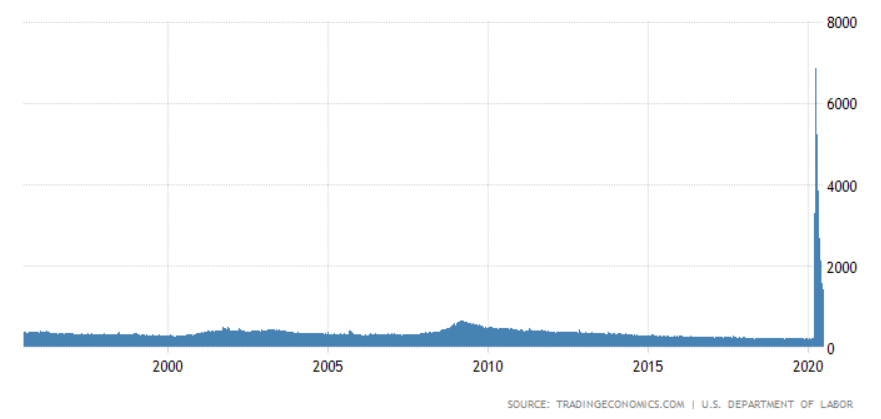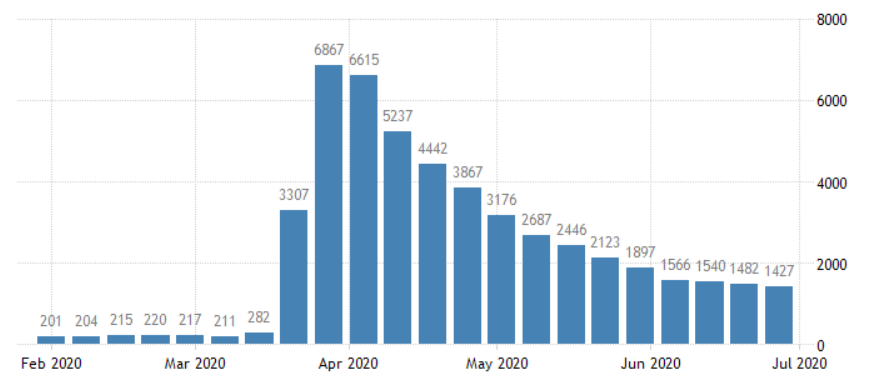A new government report showed mixed data on the U.S. labor market. On the one hand, the economy is adding more jobs than economists expected, on the other hand, the weekly report on initial applications for unemployment benefits again showed encouraging statistics.

According to Thursday’s report from the U.S. Department of labor, in June, was created 4.8 million jobs in non-agricultural sector. This greatly exceeds the average estimate of economists in 2.9 million new jobs.
The unemployment rate fell to 11.1% from 13.3% in may, which is also better than the expectations of economists, whose rate was 12.4%.
Last month experts wall Street had forecast a loss of 8 million jobs in may, but instead, the US economy added 2.67 million jobs.
These labor market data are of great importance to economists and investors trying to assess how the U.S. economy is recovering and what to expect in the future.
The level of anxiety is high, because data on the increased incidence of COVID-19 in the country talking about the fact that the peak of the pandemic has not yet passed. State governments are considering re-entering some of the quarantine measures and the suspension of the abolition of certain others.
In early June, the Committee of the National Bureau of economic research has officially named February 2020 the beginning of the recession in the United States.
The fed Chairman Jerome Powell this week acknowledged the recovery in business activity, stating that the economy “has entered a new important stage and did it earlier than expected”. At the same time, a senior official said that the Outlook is “extremely uncertain” and would depend on “our success in containing the virus.”
According to another important report from the labor Department, the number of filed initial claims for unemployment benefits for the week ended June 27 rose to 1,427 million versus analytical estimate of 1.3 million and a figure of 1,482 million a week earlier.


Although statistics show a decline from the peak of the week ending March 28 (of 6.86 million applications for benefits), the data regularly show a worse picture compared to market expectations.
The total number of unemployed in the United States in the amount of 48.7 million people, more than twice the peak of the 2007-09 recession years. the Data also showed that the number of unemployed receiving benefits for more than a week, increased by 59 000 to 19.29 million.
In the government report States: “the labor market remains a long way to go to fully recover. Many economists believe that the figures do not reflect the full scale of job losses, since many are still classified as employed but absent from work. In addition, several States reduce or suspend the resumption of efforts to respond to a second wave of disease, and more people could lose their jobs.”
The next key event will be the decision of the Congress on the extension or cancellation of additional unemployment benefits ($600 per week). At the end of July completed this state program is assistance to Americans who have lost their jobs because of the pandemic.
Lawmakers will begin work on 20 July (after the holiday) and will consider further measures to stimulate the economy. Some experts are calling for a reduction of the current additional payments and the introduction of bonus payments for access to work to encourage Americans to return to work.
According to economists from the University of Chicago, the current Federal allowance, established in accordance with the Law CARES, replaces more than 100% of lost wages for approximately two-thirds of American workers, prompting some workers to remain unemployed.







